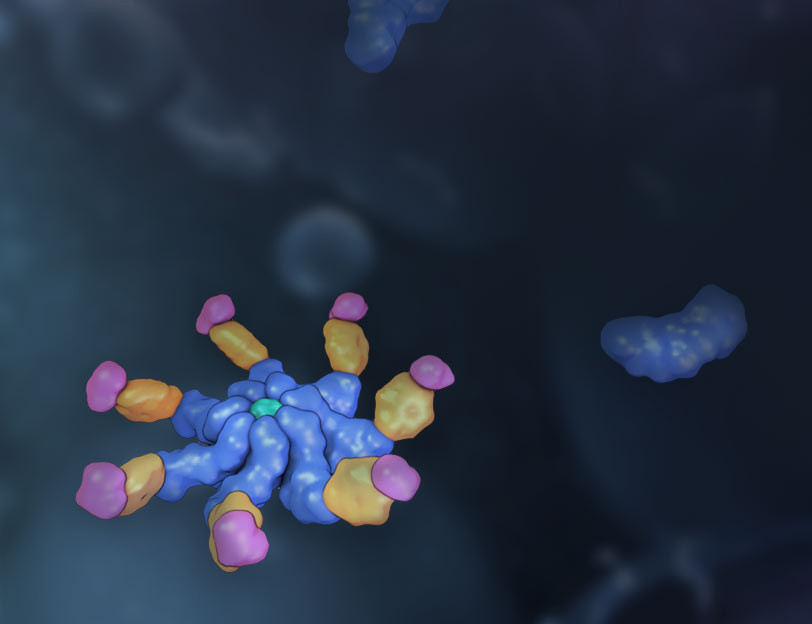
Our innate immune system was meant to do good. Up until a century ago, most humans died from infectious diseases like diarrhea, tuberculosis and meningitis. Over millions of years, our immune system has evolved to fight these life-threatening infections from pathogens. As a result, we have developed a highly efficient response to these tiny invaders. But it seems that our immune system may be turning against us.
In the past century, breakthroughs in modern medicine, such as antibiotics and vaccines, make it much less likely for humans to die of infectious disease early in life. This caused a shift from infectious to non-communicable causes of death. We are living longer, exercising less and eating more—processed foods, especially. All of these lifestyle changes result in more accumulation of pro-inflammatory proteins or lipids in our bodies. The result? A heightened inflammatory state that can be the basis of certain chronic non-communicable diseases.
Researchers have found that the same immune pathways originally meant to protect our body from pathogens also activate inflammatory pathways in chronic diseases. At the center stage of these inflammatory pathways is NLRP3.
What is NLRP3?
NLRP3 (NOD-, LRR- and pyrin domain-containing 3) is the primary sensor for inflammatory signals caused by aging, physical inactivity, over-nutrition or environmental factors. NLRP3 can be the cause of chronic diseases because it acts as a whistleblower, passing “danger signals” downstream to initiate chronic inflammatory tissue reactions that occur in various diseases. When activated, NLRP3 nucleates the formation of an inflammasome, leading to subsequent activation of caspase 1 and pro-inflammatory mediators, such as IL-1ß and IL-18. This activation eventually leads to pyroptosis, an immunogenic form of programmed cell death.
Which diseases can be caused by NLRP3?
CAPS
Cryopyrin-associated periodic syndromes (CAPS) is a group of systemic auto-inflammatory disease caused by gain-of-function mutations of NLRP3. So far, 200 mutations in the NLRP3 gene are known to be associated with CAPS. Different mutations can cause varying conditions, such as blood neutrophilia, fever, inflammation in the skin or joints, and hearing loss.
Metabolic diseases
Sedentary lifestyles and a diet of high sugar, fat and cholesterol can cause lipids to accumulate in the body. These lipids can activate NLRP3, causing chronic, low-grade inflammation, which can contribute to type 2 diabetes, nonalcoholic steatohepatitis (NASH) and certain types of cancer.
Crystal and protein aggregate pathology
Under certain environmental conditions, soluble molecules in the body can crystallize. These crystals can activate NLRP3, causing chronic inflammation or an acute inflammatory reaction. For example, cholesterol crystals can cause atherosclerosis symptoms; MSU crystals formed by uric acid can cause gout flares. NLRP3 can also be activated by aggregates of misfolded protein, such as ß -amyloid plaques seen in Alzheimer disease.
How can NLRP3 be targeted to treat disease?
Small-molecule NLRP3 agonists
NLRP3 agonists can act as immunostimulatory molecules to enhance immune function, such as reverse the immunosuppressive microenvironment in solid tumors. They can also be used in vaccines as an adjuvant to further enhance the body’s immune response.
Inhibiting NLRP3 transcription and licensing
NLRP3 activity can be controlled by inhibiting NLRP3 transcription or through post-translational modifications. NLRP3 transcription can be prevented by inhibiting certain kinases that promote NLRP3 expression. Targeting NLRP3 phosphorylation or deubiquitination may also inhibit NLRP3 activation.
Inhibiting NLRP3-mediated effector mechanisms
Targeting inflammasome components or signaling molecules downstream of NLRP3, such as IL-1 ß or caspase 1, can also have a therapeutic effect. However, this approach lacks specificity and could increase the risk of side effects.
Small-molecule NLRP3 antagonists
Currently, most drug discovery efforts are focused on screening small molecules for NLRP3 antagonists. Although numerous compounds have been found to inhibit inflammasome activity, it is largely unclear whether they are directly or indirectly targeting NLRP3. Unfortunately, much is still unknown about the NLRP3 activation pathway. Future research is needed to identify the mechanisms of action of these compounds and determine the activation mechanism of NLRP3.
Reference: Mangan MSJ, et al. Targeting the NLRP3 inflammasome in inflammatory diseases. Nat Rev Drug Discov. 2018 Aug; 17(8):588–606
Need a fast, simple, high-throughput assay to detect NLRP3 inflammasome activation? The Caspase-Glo® Inflammasome Assay directly measures Caspase 1 activity in cells or medium, no sample prep required!
